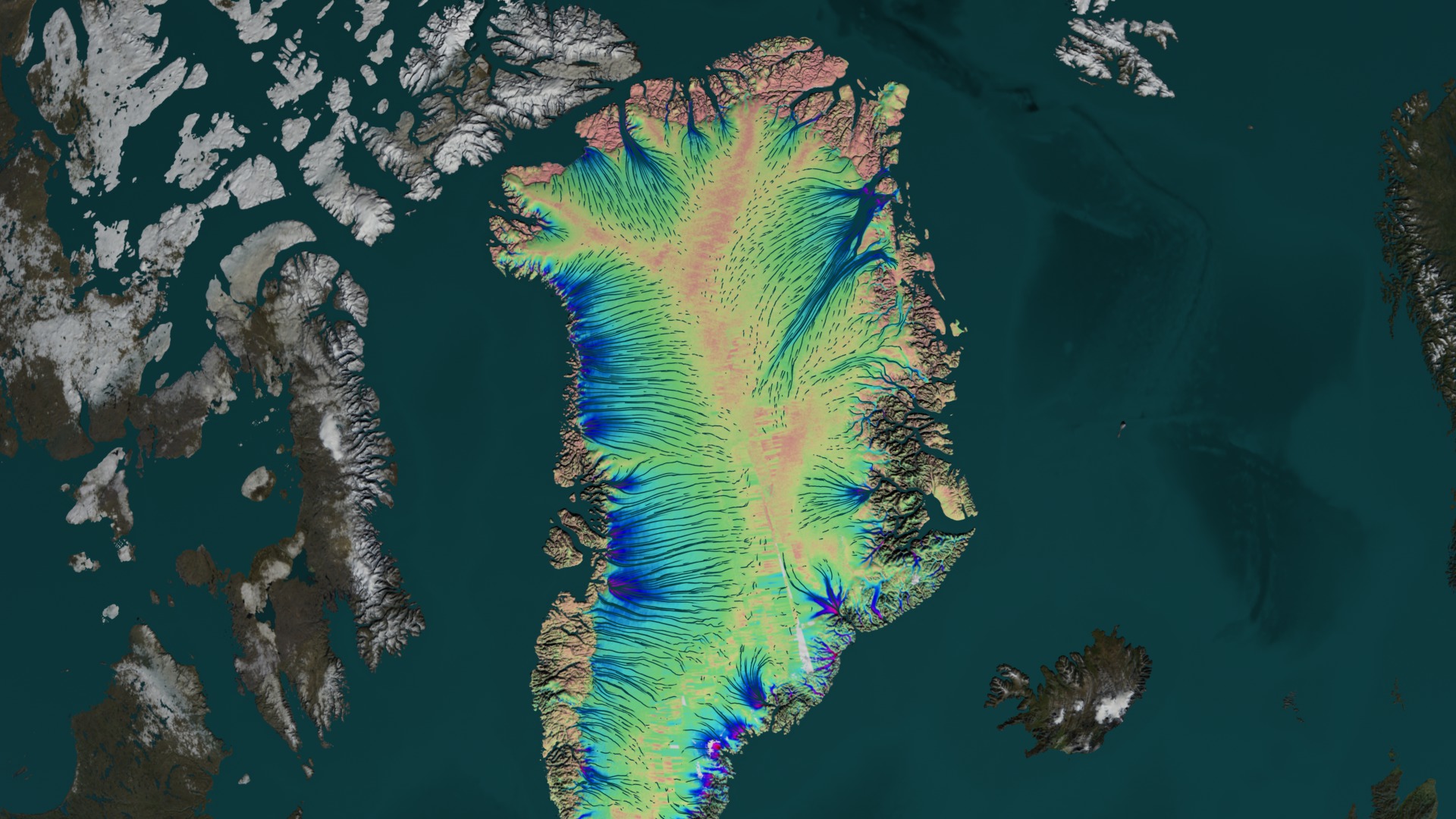Iceberg Maker
Petermann Glacier has earned a reputation in recent years for birthing "ice islands"—icebergs so big they get their own designation. Petermann's ice tongue, the portion of the glacier connected to land but still floating, snakes through a fjord for more than 40 miles, making it the largest of its kind north of the equator. Stressed by ice flow behind it, grinding against a rocky coastline, the front of this tongue has set free island-sized icebergs in the summers of both 2010 and 2012. While this shedding of ice is a normal process, NASA scientists are keeping close watch on how Greenland's ice responds to warming air and ocean temperatures, as the ice sheet has shown rapid changes in the past decade. Watch the visualization to see a sped-up animation of how Petermann Glacier empties ice from Greenland's interior to open water.

Flowing toward the rocky strait that separates Greenland and Canada is the Northern Hemisphere's largest floating glacier.
Pinks and yellows represent slower movement, while blues and purples represent the fastest ice flow, typically near the coast.

Scientists used satellite radar data from NASA and the space agencies of Japan, Canada and Europe to map Greenland's ice flow.

A satellite image from 2006 shows the mottled surface of the Petermann ice tongue years before the massive 2010 ice island emerged.

A close-up of the same image reveals the crack that ultimately led to creation of the 2010 ice island.

Five times the size of Manhattan, the ice island birthed in the summer of 2010 was the largest Arctic iceberg since 1962.

This photo of a large remaining chunk of the 2010 ice island was taken by an astronaut on the International Space Station in the summer of 2011.

A close-up of the astronaut photo reveals melt ponds and creeks of melt water cutting across the ice island's surface.
Credits
Please give credit for this item to:
NASA's Goddard Space Flight Center
Cover photo courtesy of Michael Studinger
Astronaut photos courtesy of Expedition 28 crew
Ice tongue images from ASTER instrument on NASA's Terra satellite
Iceberg calving image from ALI instrument on NASA's EO-1 satellite
-
Animators
- Cindy Starr (Global Science and Technology, Inc.)
- Horace Mitchell (NASA/GSFC)
- Greg Shirah (NASA/GSFC)
-
Producer
- Matthew R. Radcliff (USRA)
-
Scientists
- Eric J. Rignot (NASA/JPL CalTech)
- Jeremie Mouginot (University of California, Irvine)
- Ian Howat (Ohio State University)
- Ted Scambos (NSIDC)
-
Writer
- Patrick Lynch (Wyle Information Systems)
Release date
This page was originally published on Tuesday, January 8, 2013.
This page was last updated on Wednesday, May 3, 2023 at 1:52 PM EDT.
